Do you spend a big chunk of time creating your Amazon product listing? How much time do you spend ensuring it is optimized?
It’s no secret that having a powerful product listing is important. But this isn’t just a one-time investment. After you’ve implemented these quick Amazon ranking hacks it’s time to take the next step!
I’m here to tell you how important your Amazon product listing is, we covered this in our complete guide to selling on Amazon but we went deep in the specifics here of what you need to know when creating a product listing and how you can continue to optimize in the future. After buying UPC codes, creating your product listing is necessary to start selling your products on Amazon FBA.
We’re analyzing the product listing optimization for Jungle Stix which has generated $260,000 in sales.
Here’s What We’re Covering:
- Why Follow Product Listing Best Practice?
- The Anatomy of a Product Listing
- Grading Your Product Listing
- Product Title
- Product Images
- Key Product Features
- Product Description
- Results
- Product Rating
- Bonus Tip: Hack Your Product URL With Keywords
- Wrapping This Up…
Why Follow Product Listing Best Practice?
If you don’t, your product is less likely to rank well and you will lose sales to the competitor. This is all part of a comprehensive SEO strategy. I know it’s a busy life running your own business but this really does require some of your attention to get the most out of your products.
You need to ensure all of your product listings are optimized so that you can:
- Increase visits
- Boost conversions
- Grow profits
The Amazon platform is pretty set in terms of how your product listing is pieced together and what limitations you have.
A bonus is also a fantastic customer experience that can lead to better Amazon reviews! However, it’s totally up to you how you populate those pages with product info, keywords, and images. That’s where the fun part comes in.
The Anatomy of a Product Listing
There are 6 pillars to every product listing, for either retail arbitrage or private label, that are important to understand as an Amazon seller.
These are:
- Product Title
- Product Images
- Key Product Features
- Product Listing Description
- Amazon Product Reviews
- Amazon Product Rating
You should ensure you follow best practice guidelines for each element of your product listing and then continuing to improve and optimize. Then you can stay ahead of your competitor, add value and the customers will come!
Grading Your Product Listing
Before we take a look at some best practice for each of the 6 core elements of a product listing, I thought it would be useful to explain how important each element is.
The Jungle Scout Product Listing Grader is a useful, totally free tool which gives you an instant insight into where you can improve your listing.
It will give you a rating and a breakdown of how each element on the page performs:
We calculate this by appending points to each element. Below is the maximum amount of points each is worth, which gives you an idea of where you need to spend the most time optimizing:
And this is backed up by data too. Take a look at some of our studies below, where you can see how much some of these product listing elements play a part in the average conversion rates for those products:
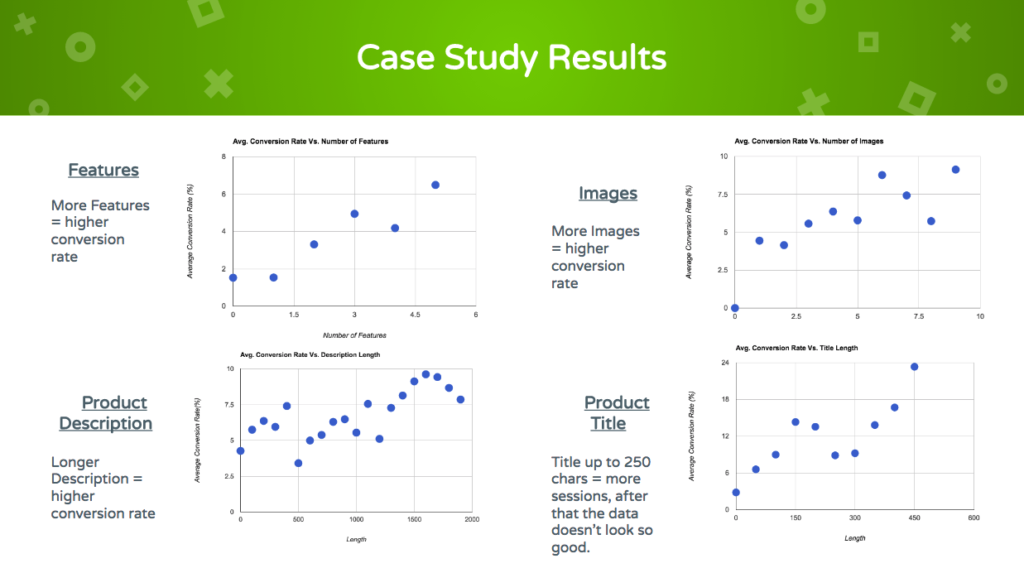
So in a nutshell, the more you work towards the upper limitations Amazon gives you in terms of character limits and number of images, the better off you’ll be.
Let’s take a look at each pillar in more detail!
Product Title
You have a 250 character limit or about 50 words for your product title(for most categories), and you should use it. All of it.
Some categories are allowed longer product titles and others require a little shorter titles but regardless, you need to be using the real estate Amazon gives you.

Here’s some best practice takeaways for writing killer product titles:
- Remember you are writing your title for humans – although Amazon has algorithms, these algorithms are based on what real people are searching for. Plus, when people see your product title, they need to understand it and want to click it
- Include something of added value, such as a product benefit or a key element that differentiates you from your competitor. For one of my products, Jungle Stix, we have included all sorts of things people want to know such as the size, material, quantity and even that the marshmallow skewers are eco-friendly and biodegradable!
- Include your priority target keywords, and make sure they’re relevant. Keywords in titles have the biggest effect (compared to features and description) so think about this carefully.

When you think about it, you should probably struggle to fit in all of the amazing facts about your product and your target keywords in under 250 characters. So this one should be easy!
Product Images
You can have up to 9 images including a lead image. Guess what, use them. All of them.
Images are so important, as people are so visual and your Amazon product images are the main thing they are going to use as their first impression of your product.
If you’re thinking, how am I going to create that many images for each product, here’s some more top tips:
- Ensure images are at least 1000px in width and 500px in height (more is better) – this means they will look nice when zoomed in
- Invest in some professional photography to ensure you images are high resolution and potential customers can zoom right in and see what they’re buying
- The main image needs to have a plain white background and cannot include watermarks, infographics or anything in it to deceive the customer
- Show your product from different angles, zoomed in and zoomed out
- Have an image showing your product packaging
- Include some lifestyle images, showing the product in use

- Take some photos to demonstrate the size and scale of the product
- Utilize infographics to demonstrate key features of the product, or to show a money back guarantee or 100% satisfaction guarantee. Here’s an example from Jungle Stix where we used an infographic to show the size of the product:
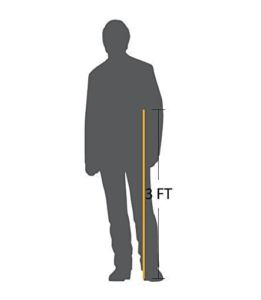
Get creative – with all of the different things you want to include here, generating 9 images should be easy enough.
Key Product Features
Product features (Bullet Points) Character Limit
Now we have the opportunity to include lots of bullet point features about our product. It’s recommended that you have 5 or more points in your listing. The official character limit is 1000 characters (250 words).
Key takeaways:
- Put yourself in the shoes of the customer, what do they want to know? Why should they buy your product over the competitors? Remember to add value!
- Put the most important features at the top of the list, many viewers will skim read
- Try to answer any customer objections that might come up – you can also add to this with any questions you get about the product over time
- Include any guarantees or warranty you are offering (Amazon offers the A-Z guarantee anyway so go ahead and play that up)
- Mention what the product is made of – is the material high quality?
- Does the product solve a problem? Explain how
Product Description
Amazon description character limit
According to customer support officially the Amazon description character limit is 2,000 (with spaces) in their product description. That’s about 300 words. Use this space to take a deep dive into your product, what it is, what it does and why it’s the best product on the market in your niche.
Here you can elaborate on any of the features you have already written above. The product descriptions need to be sharp and short and visitors can read more here in the description.
The same rules apply when writing any content for the web – make sure it’s easy to read:
- Keep sentences short – between 15 – 25 words
- Lead with the features and benefits to the customer, and talk about the product secondary to that
- Make the visitor believe that your product is something they need
- Keep it relatable – use language that you would use if you were speaking to someone
- Include your target keywords but don’t keyword stuff and make it difficult to read
- Try and use a storytelling approach about the product
Results
Now, we assume reviews are important when it comes to Amazon’s algorithms. They’re also more so important in terms of providing social proof and giving potential customers trust and confidence in your product, or indeed you as a seller.
This is a bit of a hot topic right now, with Amazon recently changing their Terms of Service and banning incentivized reviews. But there are still things you can do to provide a fantastic customer experience which can help to encourage completely organic reviews.
- Run some automated email campaigns to keep customers informed about when their product will arrive, and follow up emails. So long as you are not running any promotions you can encourage seller feedback and product reviews here.
- Ensure your product is of high quality, always review samples and invest in some quality control
I understand that if you’re starting out, or you are a small business, getting reviews can be tough. But remember, everyone else is in the same boat, including your competitors. Providing a good, honest customer experience will really stand in your favor.
Sending emails to your Amazon customers is part of
If you’re interested check out
Product Rating
The reviews you do get are important because these will fuel your rating.
If you’re in the upper 4-5 star realm, that means you’re doing really well. If your product is struggling with a lower rating, here’s a few ideas and actions you can take:
- Look out for patterns in the bad reviews, is there something wrong with the product that can be fixed?
- Gather feedback from customers with automated email campaigns, this can sometimes help you to resolve a problem before a negative review has been left
- Accumulate more reviews and hopefully balance out your overall rating with better reviews (see points above in number of reviews)
You have to develop a thick skin in the ecommerce world, because negative comments can creep in and sometimes they are unavoidable. As a seller, make sure you are doing everything you can to offer an amazing product at a reasonable price, and provide a great customer experience.
Bonus Tip: Hack your product URL with keywords
Did you know that you can include your top keyword in the product URL?
Here’s a breakdown of how I do it with the Jungle Stix product as an example:
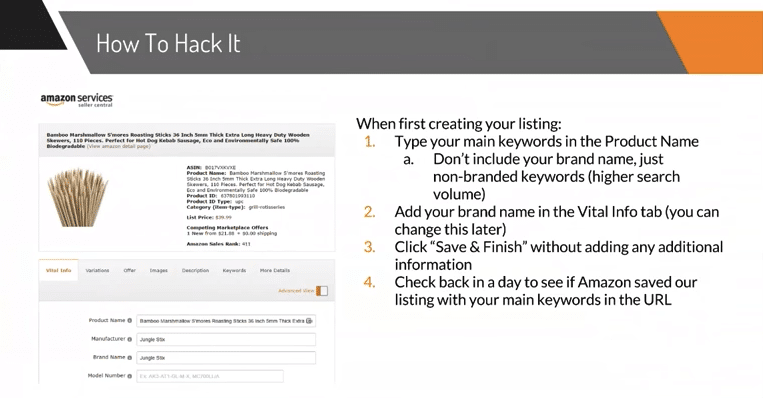
What about keywords?
So, it’s super important to understand what keywords you are targeting and what you are ranking for. This can help you to optimize your listing, but it’s just generally good practice for improving your sales and profits.
There’s a cool manual hack where you can see directly if you are ranking for a specific keyword. Simply type in your Increase profit to find out if Amazon are ranking you for it:
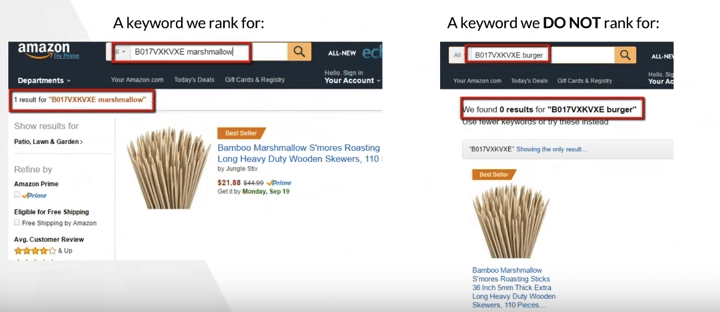
If you aren’t ranking for keywords that you should be, you can go back to your product listing and see if you have included the keyword, if there are any typos or stray punctuation. We have a complete guide on Amazon Keywords here.
Some people have found that changing their keywords in the listing causes their rank to change almost immediately (sometimes within an hour for listings with less history). So you can even test your keywords manually by experimenting. For example:
- See where you rank for a keyword by searching for it and finding your listing directly in Amazon
- Go and add the keyword to your title, or your features
- Then search for the keyword again and see if your ranking has improved
You can also stuff your search terms field with any keywords.
Make sure you keep them relevant otherwise Amazon will struggle to understand what you are offering.
Oh yea, finally, don’t forget that Amazon PPC is also a great way to get more data on your keywords.
If you’re interested check out
Split testing your way to the top
If you follow the best practice tips above, you will be making excellent progress in getting your listing fully optimized. But there are still other things you can do.
Split testing is possibly the most verifiable way to find out what works and what doesn’t. This involves changing one element of your listing and serving both this and the original to visitors of your product page.
Split tests need to be left to run for a long enough time to gather significant data, which will give you scalable ways to improve your listing.
The highest impact split tests to run on an Amazon product listing are altering your price +/- 10% and testing your lead image.
We recently launched Amazon’s only split testing tool, Splitly. It helps sellers easily create experiments to find out where their products can be optimized. In some cases, sellers have been able to more than double their average daily sales.
The test results above show that the change in the product listing, which was a decrease in price of 3 dollars, has dramatically improved average daily sales and conversion rate. It actually provided an extra $88 in profit per day!
Final Words
Whether you are just listing your first product or a seasoned pro with several products selling on Amazon already. Selling your first private label product can be scary but with this guide, I hope it’s a bit easier.
I hope you found some useful tips in there on how you can improve your listings today. Competition can be fierce on Amazon so it’s important to ensure your products stand out above the rest.
Good luck out there, wishing you every success!
Leave a comment below and let’s start a conversation! We’re here for you!
Special Offer…
For 2020 we’ve completely updated and launched a brand new Amazon business course that teaches first time entrepreneurs how to launch their very own physical product Amazon business fast. We give you all the training to write product descriptions that sell. And if you want to check that out and see if it’s right for you click here…

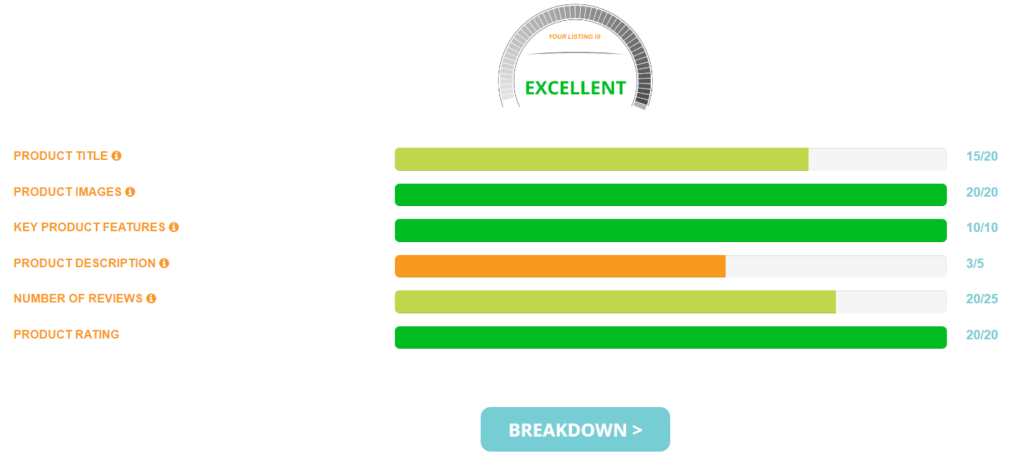

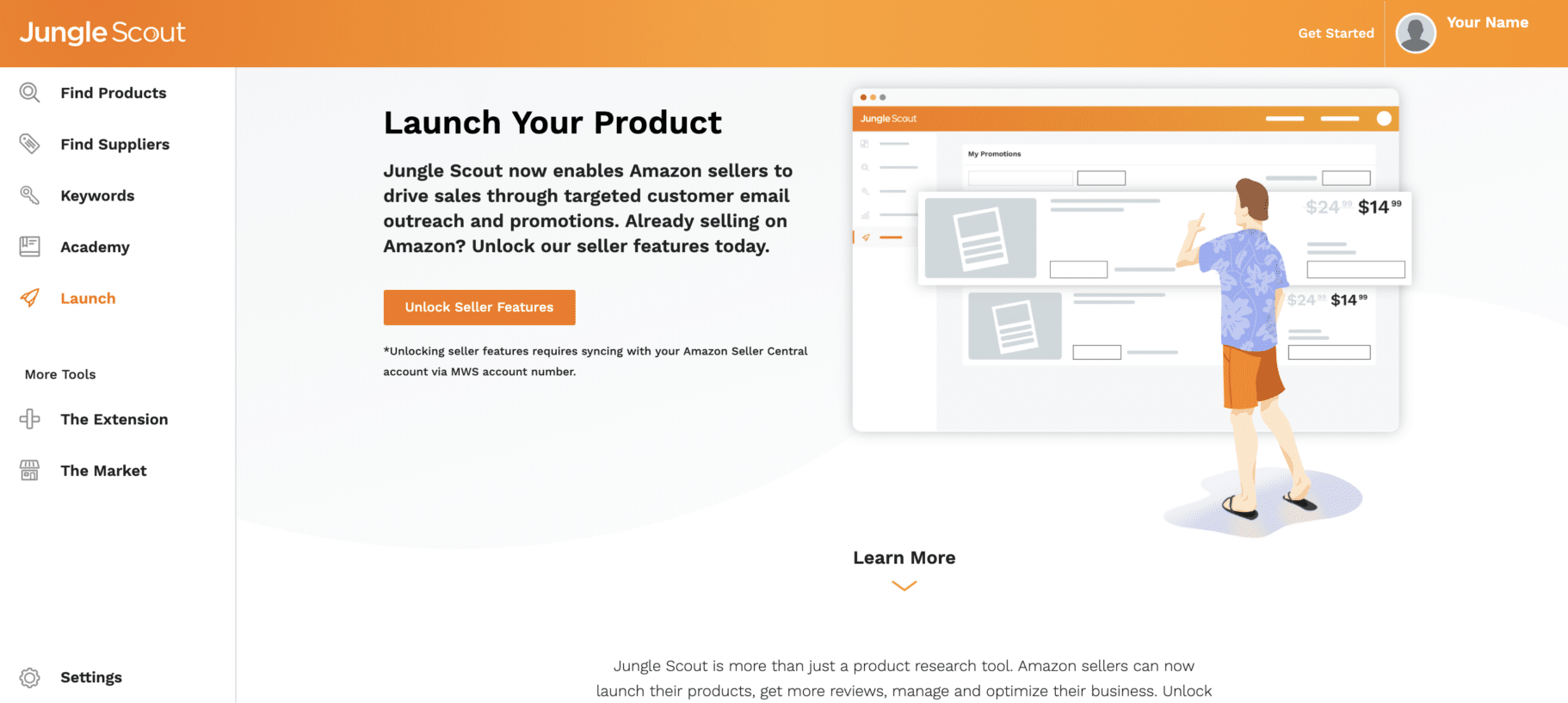
Thanks for your the best content, keep posting.
Your blog is so nice I appreciate you for the great job
Thanks for checking out the article swati!
Hey,
The guide is really helpful and there are many things which I like most and enjoyed reading. Images are really awesome and I got my answer of which is best for me.
Thanks for sharing such useful information to the world.
Pradeep Dixit
Having trouble finding where to edit “PRODUCT TITLE, PRODUCT DESCRIPTION, PRODUCT IMAGES, KEY PRODUCT FEATURES,” etc. Perhaps because I am new at this or because I am trying to edit an EXISTING listing, what I see is “Vital Info, Variations, Offer, Compliance, Images, Description, Keywords, More Details.” I also checked out the Amazon templates but the column headers don’t coincide with your list either. Also curious why Jungle Scout says I have no images, but I do.
Hey Kathryn, so it depends if the listing is yours or if you’re “piggybacking” on another listing. Piggybacking means your listing has the same ASIN as another Amazon listing. If that’s the case you won’t be able to adjust anything besides price. You can’t even use your own photos.
Very Useful article for sellers. Listing is one of the most important things to get a great start. An optimize listing gives you a higher rank and also a pretty good conversion rate.
Anyway, if anyone wants to get a good listing, they can write it themselves with the tips written or can find some very good service on fiverr or Upwork. You can check this out- https://www.fiverr.com/share/wWPRK
Greg, you have shared a really informative blog about Amazon product listing. I would say that their is also a 7th pillar called “Data Analysis” as sales growth after Optimizing your product listing can give you clear image about loopholes in your listing.
Anyone knows why my backend search terms haven’t been indexed after changing for 4 days?
I have been using Jungle Scout and it is really helpful.
Thank you for this post it helpful.
Informative post! For my ecommerce store, I hired Springbord who offers product listing optimization and onboarding services at affordable cost. Their marketplace management services also includes product image optimization, inventory management, Amazon A+ content creation and much more.
Greg. NEW to Amazon. Do you, by chance, offer a service in which YOU optimize the listings for people? If so, I am interested. And if so, what do you charge?
Nice Article this very helpful for me.
I want a suggestion from you. my product is a book so how to write the title for this product.
Thanks for your nice tips.
Great helpful, thank you for your article.
Brilliant. I’m wiser now and can’t wait to get started.Thank you.
We are just starting so this is very helpful! we-ll let you know!
Thanks Laura!!
Hi, I was wondering wha are the steps to split testing a product. Let’s say I want to try a variation of images. What do I actually do?
thank for sharing!
Very Helpful. Amazon sale rank is captivating now. Thanks for sharing this vital info.
Yes, the product images should have white background for Amazon product listing and it sells more and more.
this is a great resource and very effective idea. thanks
This looks a really great post. However, I found some other points too which helps to optimize products in right way. You have mentioned how to implement keywords but before that one should find the right keywords first. This is where sellers are doing wrong, because most of the sellers are searching through Google, probably using google keyword tools but Amazon has their own search engine (A9) and they produce search based on their algorithms.
For a search, Google is going to produce tons of results including websites, blogs, social media posts, products and many more where Amazon is going to produce results on products page only. So sellers should choose keywords more wisely and implement them on product pages.
Can you share some of the approaches that will be helpful for finding the exact relevant keywords. As i know how to optimize listings by using the searched keywords but failing to find out the relevant keywords that will rank my listings. 🙂